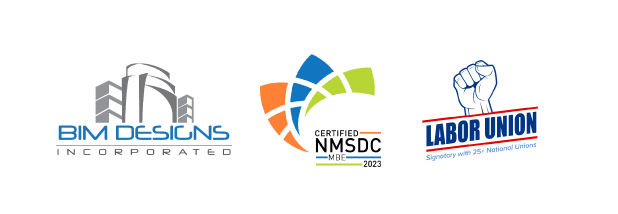
Let’s admit it – rework has to be the most irritating aspect of construction. More than just being frustrating, rework is also a leader in wasted time and added construction costs. By using BIM in design, the need for rework can be limited before construction even starts.

Implementing BIM in the construction process will help reduce rework and save you money.
Unfortunately, rework is a very common occurrence in construction projects often leading to missed project deadlines, budget overruns, and sometimes even legal consequences.
According to some estimates, 30% of construction costs are attributed to rework. Studies also show that rework costs are primarily because of errors resulting from incomplete information shared between teams that often operate in a disconnected environment. A typical construction project will likely see dozens of change orders with such workflows, leading to duplicate information, omissions, and eventually construction delays.
However, there’s certainly a way to reduce project errors by improving collaboration between stakeholders through BIM (Building Information Modeling). BIM in design offers unified access to project data and tools that can bring better visibility between all the teams and bring down errors that may lead to rework.
If you’re struggling with rework costs, here’s how BIM can help you cut back on rework, boost productivity, meet project deadlines, and stay on budget.
How BIM in Design Reduces Rework
Unify All Data
BIM's fundamental goal is to unify all the disparate design and construction processes into a single integrated model. BIM software, such as Revizto, conveniently provides unified access to the project’s data so that every stakeholder can access relevant project information specific to their requirements.
Instead of letting all your stakeholders work independently using outdated systems, a virtual model accessible by architects, engineers, and contractors offers a coordinated environment where mistakes are less likely to happen.
With cloud-powered BIM solutions, everyone can see the designs in 3D or 2D, identify conflicts, fix them in real-time, and fine-tune their work accordingly. Such a unified approach also fosters collaboration between teams, leading to better project outcomes.
Identify Errors before Construction
One of the issues that lead to rework in construction is the lack of access to complete information. With a disconnected approach, any change in construction documents from any of the stakeholders means errors and surprises for teams on the field. However, with BIM, it is possible to reduce such errors and omissions by project members.
Changes in documents lead to real-time changes in the virtual model. Similarly, updates made in the model reflect immediately on the construction documents. As a result, every stakeholder has access to a single source of truth (SSOT) which has shown to be essential in construction.
For example, using BIM, architects can detect clashes between MEP systems and structural components and resolve clashes before they cause issues during the construction phase. Similarly, MEP contractors can make changes to the duct layout or change the location of mechanical systems before hammering the first nail.

Design, plan, and track in a single integrated BIM platform
Track Project Progress
Poor planning is bound to spike your construction costs. When you don’t spend adequate time planning, budgeting, and scheduling, you’ll likely face many problems right from the beginning of the project. There will be delays in getting materials and supplies, deadlines and milestones will be missed without a detailed schedule and the project will likely experience budget overruns.
However, with BIM, you can gain better control over your project budget and schedule. By integrating the construction schedule and cost components to the virtual model, your planners can virtually build the project and generate step-by-step visuals of the project progress.
With clear visual information on how the building will be constructed and the dependencies, your teams can provide feedback or incorporate changes in the schedule to maximize efficiency on site. Besides, with the ability to track project progress, BIM software provides a realistic view of how long the project will take and whether you’re hitting the important milestones.
Reduce the Risk of Construction Rework with BIM
Rework is an inevitable part of the construction. However, companies that use BIM are seeing positive results when it comes to avoiding rework. A survey from Autodesk shows that 61% of BIM users could reduce project errors and data friction. 55% of the users managed to reduce the time required for communication, collaboration, workflows, and decisions.
The statistics are clear. BIM is a great solution to reduce rework and associated costs. Get rid of your old, disconnected way of doing things. Invest in BIM technology to enhance your design and construction processes, meet project deadlines, and
boost profitability.
About BIM Designs, Inc.
BIM Designs Inc. is an agile BIM detailing, modeling, consulting, and coordination service provider. We work closely with architecture, engineering, and construction (AEC) contractors and developers that require experienced journeymen detailers and engineers for Mechanical, Electrical, Plumbing, and Fire Protection (MEPF) modeling, Laser Scanning, and Virtual Design Construction (VDC) services. BIM Designs, Inc. is a signatory with 18 UA and SMART unions in multiple states.

About the Author
Luke joined the BIM Designs team in June 2020 as the Head of Business Development and helps oversee the business development and marketing team's objectives. With over 8 years of business development and sales experience working with startups, accelerators, investors and global enterprise-level companies, he has successfully helped startups scale their sales operations. Previously, he worked in the biotech industry as a research leader for over 9 years resulting in an IPO in 2011.





